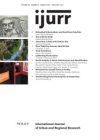Wayside shrines — representing Hindu and Catholic divinities and saints — show an astonishing dynamic in the cities of Goa and India. Not only do they persist in a milieu of drastic modern change that often seems to be at odds with their traditional locations, aesthetics and purposes, but also some of them surpass temples, churches and mosques in popularity. The popularity of these seemingly marginal religious monuments is a response to three forms of mobility characterizing modern Indian urban environments: cultural mobility — the diversification and fluctuation of religious ideas and practices; social mobility — the diversification and fluctuation of people from different castes, social classes and geographical regions, as well as the change of caste and class status due to socio‐economic change; and physical mobility — the movement of and movement around increasingly dense and complex flows of motorized traffic. The shrines modify and transform the centuries‐old spatio‐religious system of Hindus and Catholics to fit the conditions of late‐modern city life. They allow a culturally diversifying, socially changing and geographically fluctuating population to engage with a variety of personalized deities and saints whose charismatic authority is not only quite independent from formalized local social hierarchies, but often also cuts across orthodox divisions between religious traditions.
Details
Written by:
ALEXANDER HENN
Digital Object Identifier (DOI)
10.1111/j.1468-2427.2008.00803.x
About DOI
Read full article as PDF
Read full article as HTML
See the references for this article
